Samsung Galaxy Note 4 Review
The Samsung Galaxy Note 4 sports a big, high-quality screen; large, removable battery; speedy processor; stylus; and specialized software for power users.
Why you can trust Tom's Hardware
GPU And Gaming Performance
Mobile GPU performance is becoming increasingly important as people begin to see their phones and tablets as portable gaming machines. This section explores GPU performance with several synthetic and real-world game engine tests. To learn more about how these benchmarks work, what versions we use, or our testing methodology, please read our article about how we test mobile device GPU performance.
The Adreno 420 GPU in both the Galaxy Note 4 and Nexus 6 perform well in this OpenGL ES 2.0 benchmark. Not surprisingly, it pulls ahead of the Snapdragon 801 based phones (Adreno 330 GPU and only 14.9GB/s memory bandwidth) in the Graphics category by 25% to 45% depending on the device. The bulk of this advantage is due to improvements in pixel shading and texturing.
It’s a bit more surprising to see the Note 4 top the Graphics score of the Mali T760MP8 in the Galaxy S6. Both devices perform about the same when focusing primarily on geometry setup. The Note 4 gains its advantage when doing pixel shading and texturing operations.
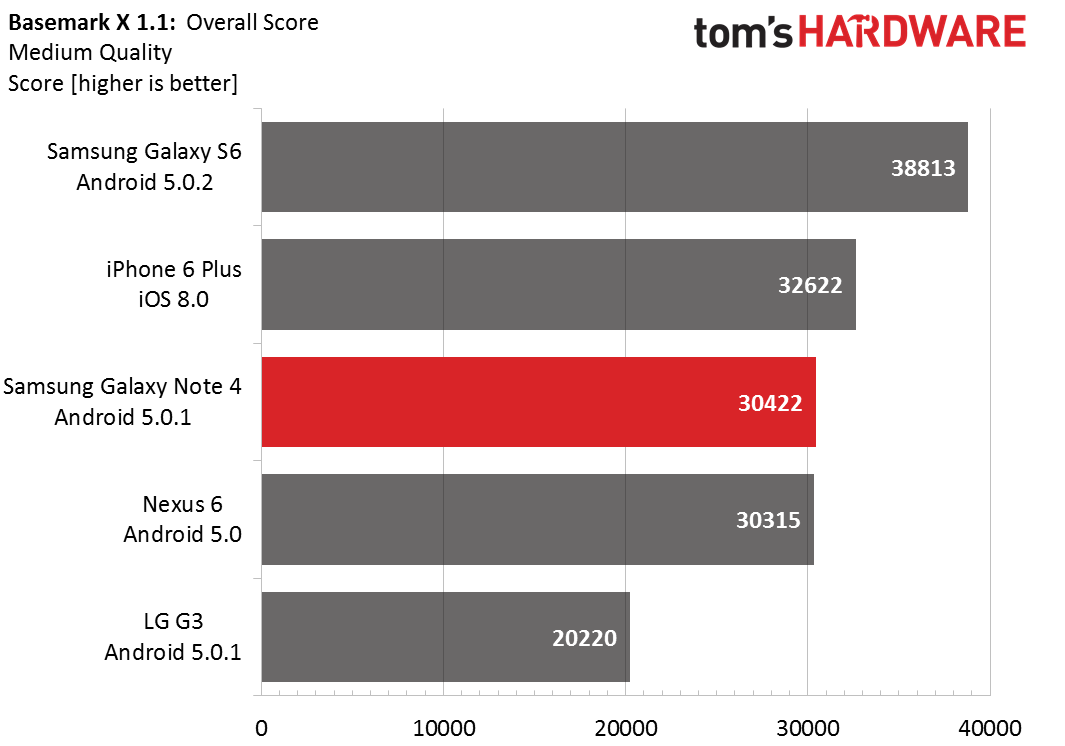
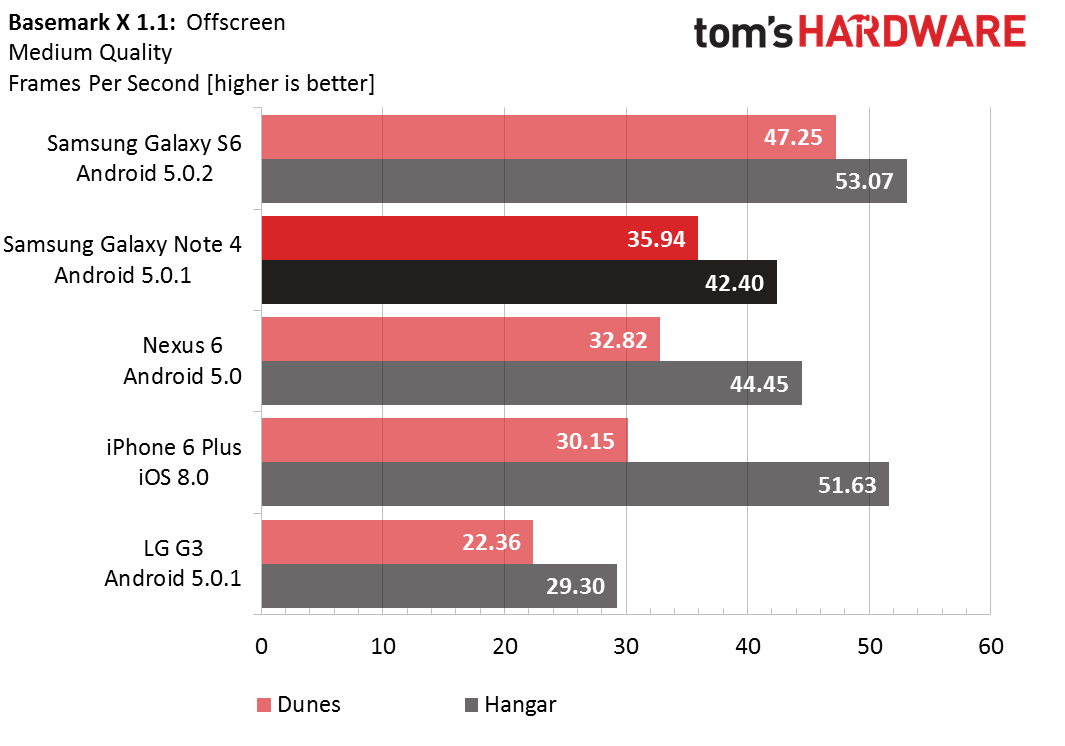

At the medium quality setting, Basemark X shows a similar 20% to 25% performance delta between the Note 4 and the Snapdragon 801 based phones (The LG G3 is an outlier, with lower than average graphics performance.) The Note 4 can't keep pace with the GS6, falling behind the newer phone by 28%.

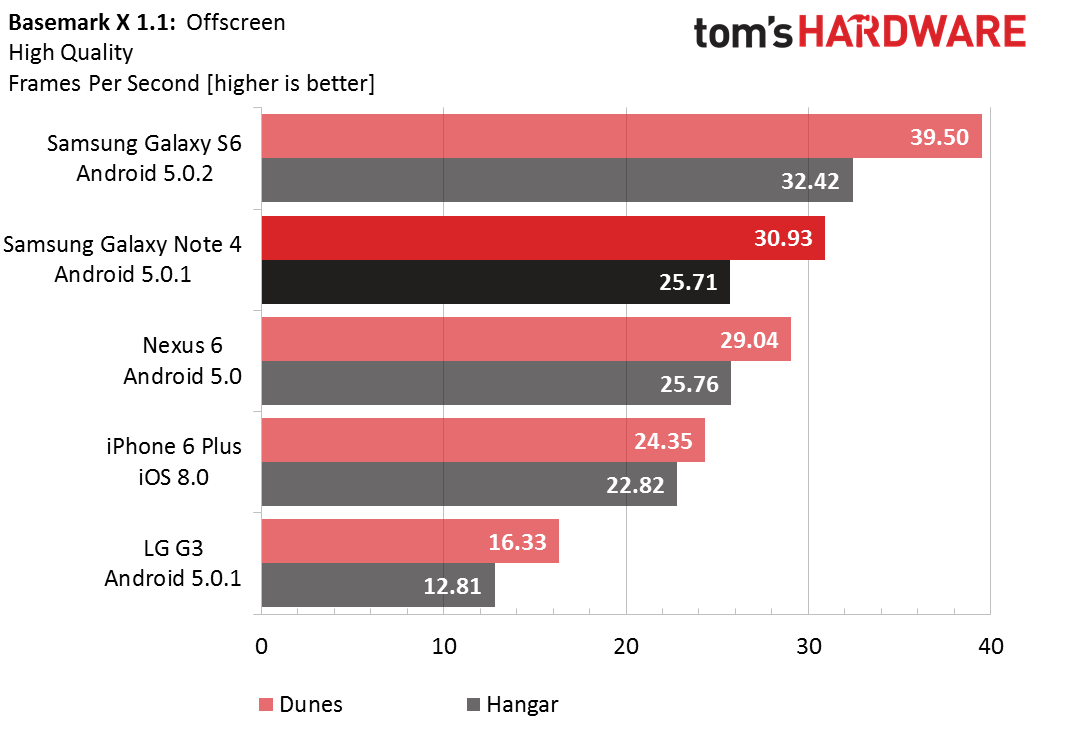
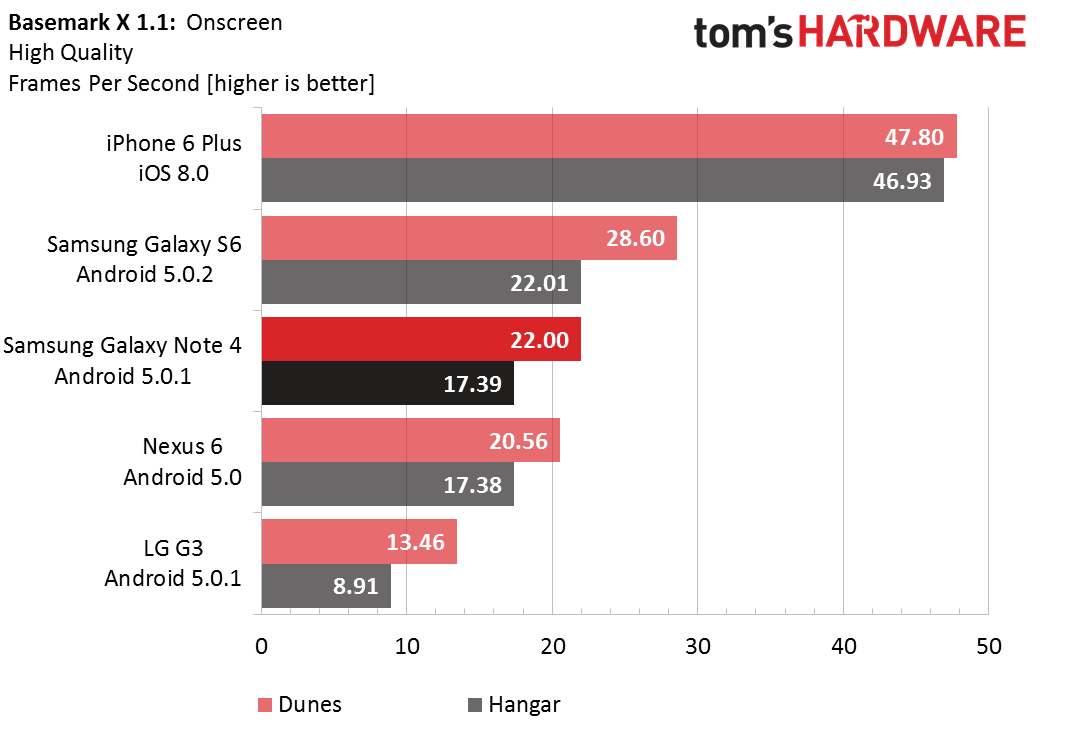
At the higher quality setting, the two Snapdragon 805 devices pull ahead of the iPhone 6 Plus, otherwise the results remain the same.
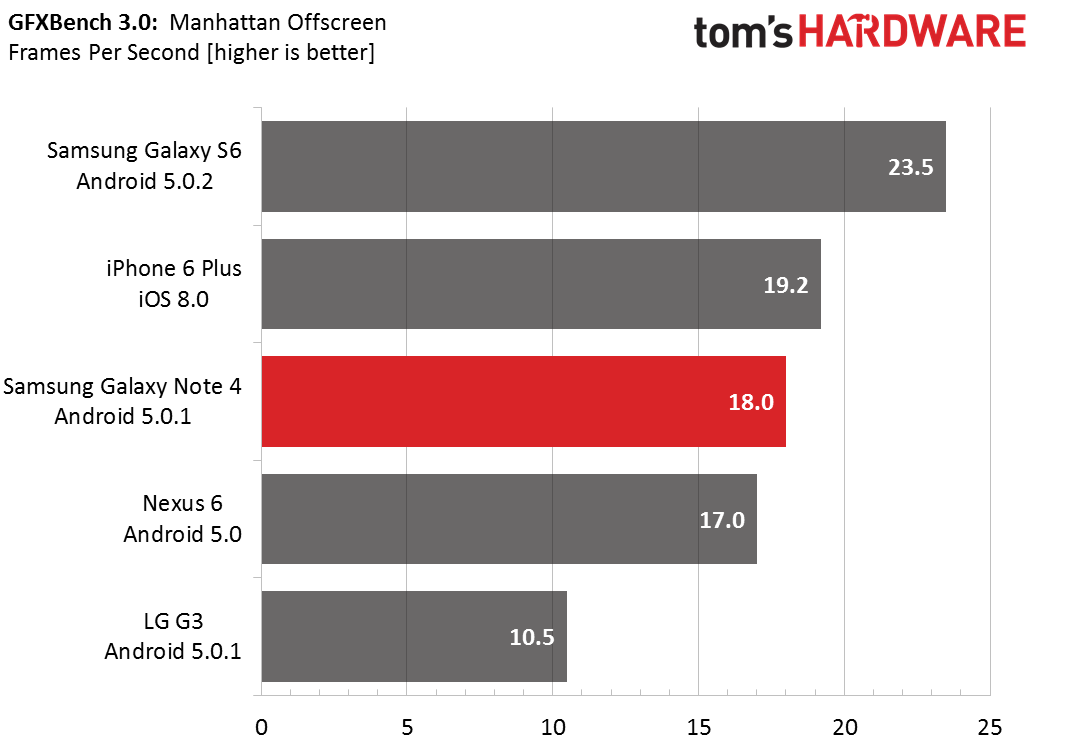
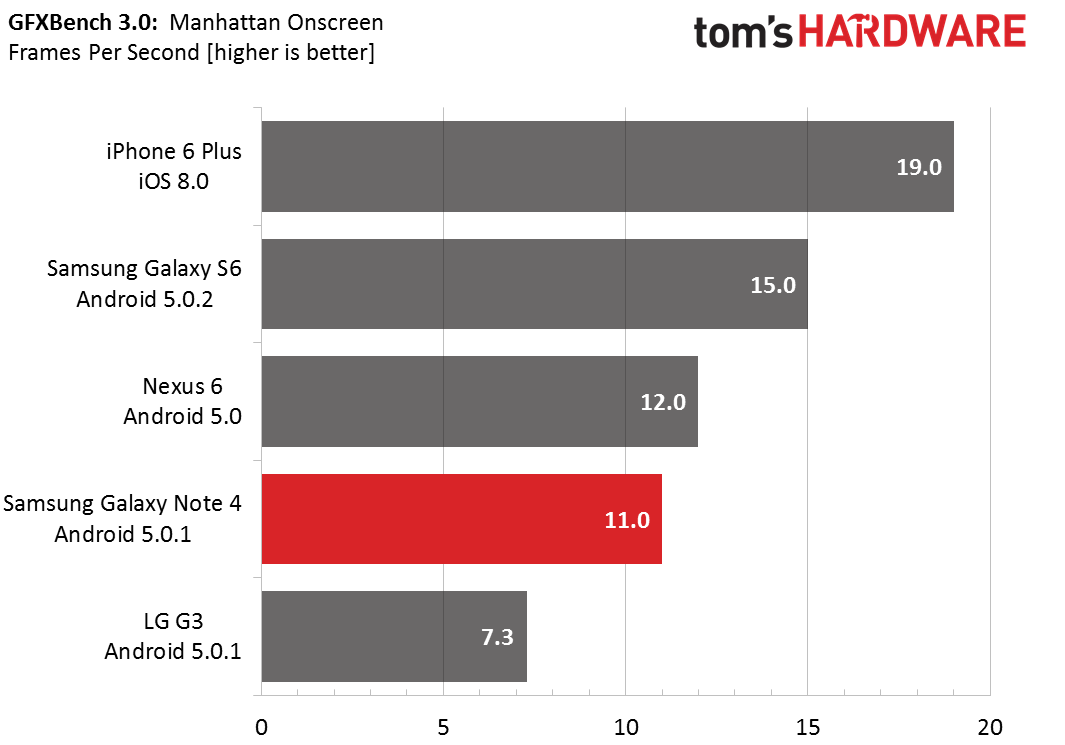
GFXBench Manhattan is an OpenGL ES 3.0 based benchmark that puts an emphasis on pixel shaders. This was one of the things Qualcomm focused on when developing the Adreno 420 and it shows: The Note 4 scores ~60% higher than Adreno 330 equipped phones.
While the Note 4 is competitive with the GS6 in 3DMark: Ice Storm Unlimited, even outpacing the newer phone in pixel shading duties, it falls behind in this more demanding test by 31%. Perhaps the synthetic tests will provide an answer.
Get Tom's Hardware's best news and in-depth reviews, straight to your inbox.
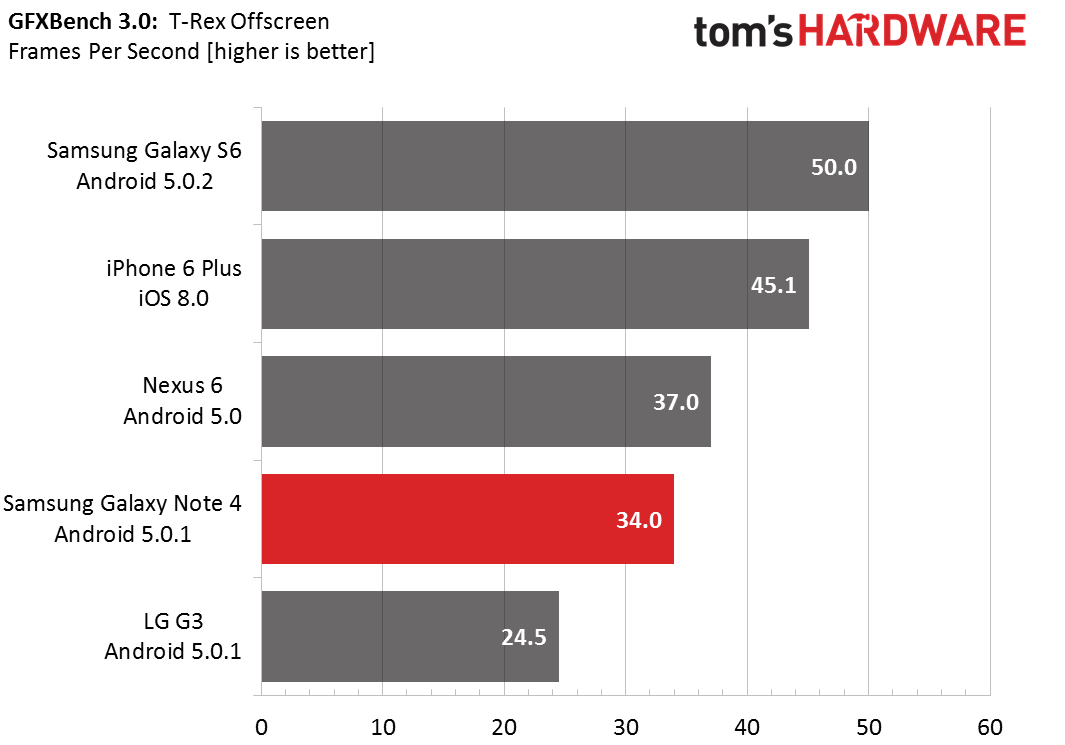

The Note 4 experiences some thermal throttling in T-Rex, which is why it falls behind the Nexus 6. Once again, the Snapdragon 805 shows a 25% to 30% advantage over the previous generation 801 (disregarding the G3).

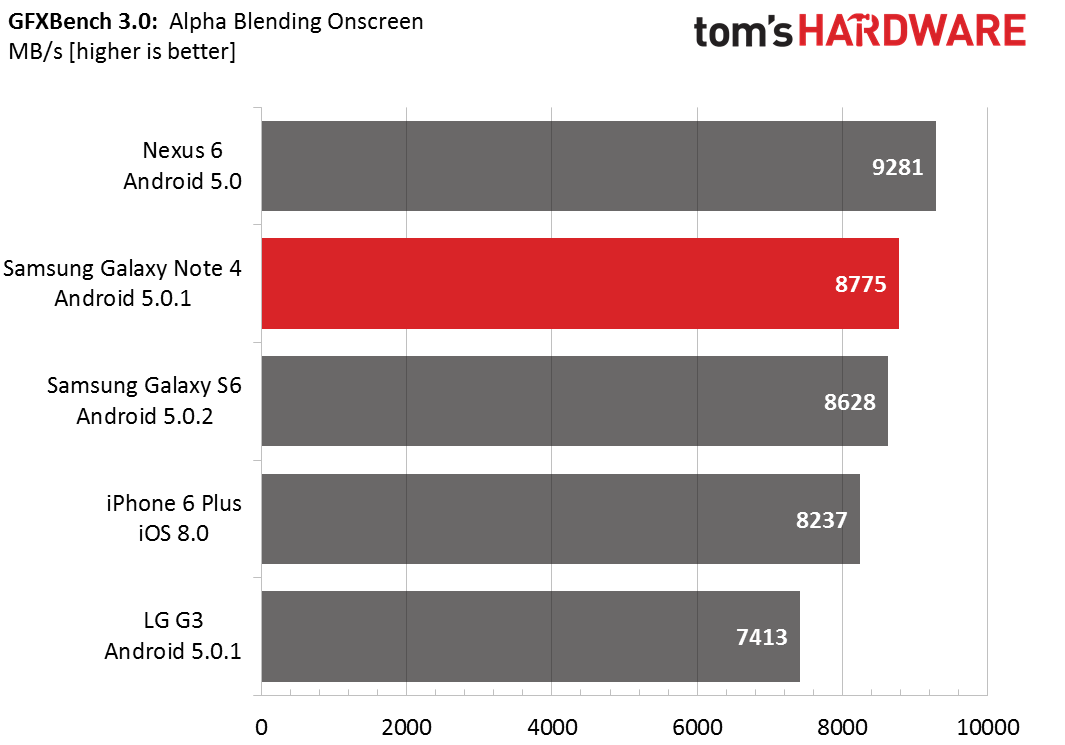
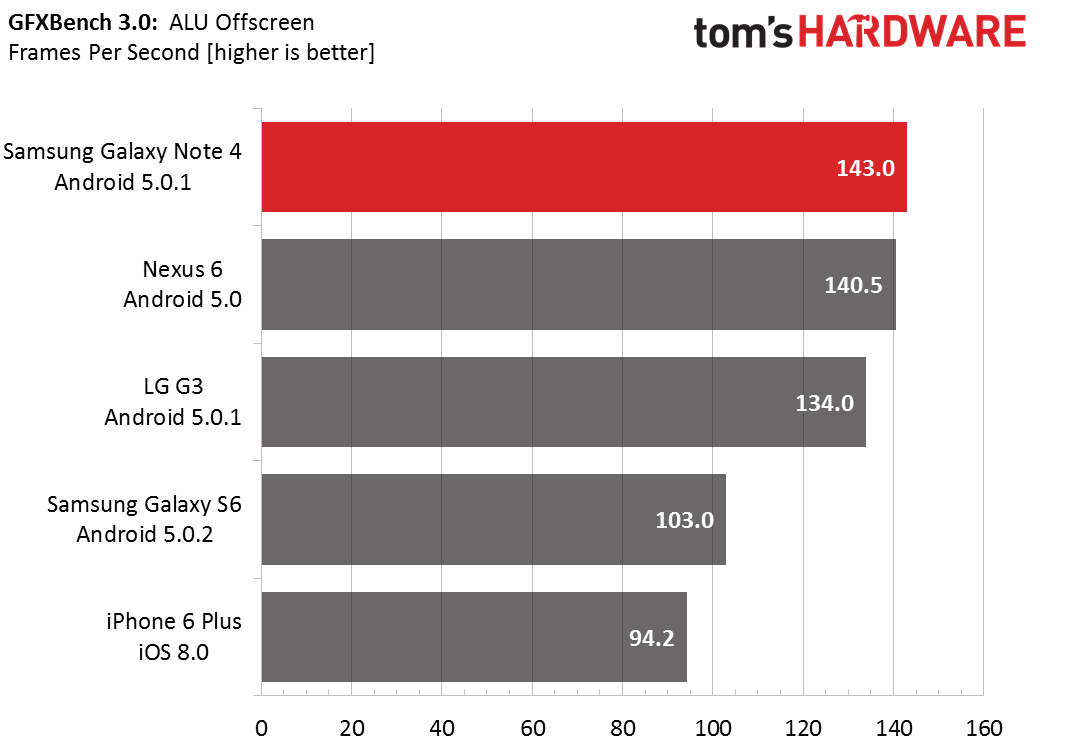

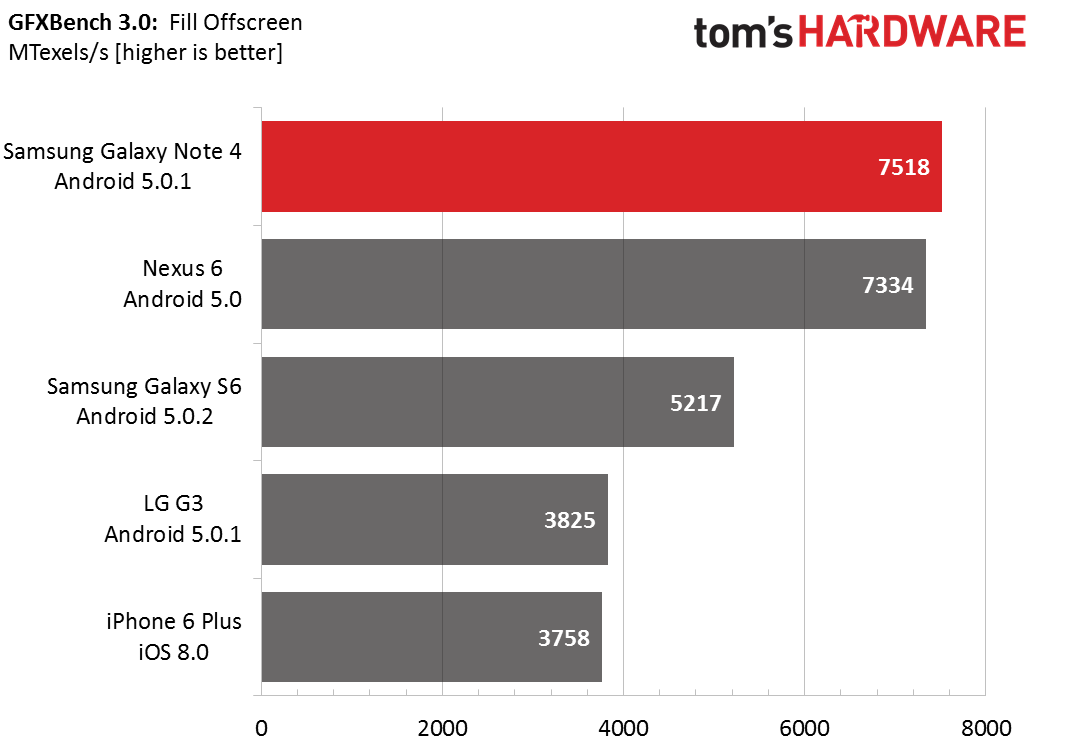

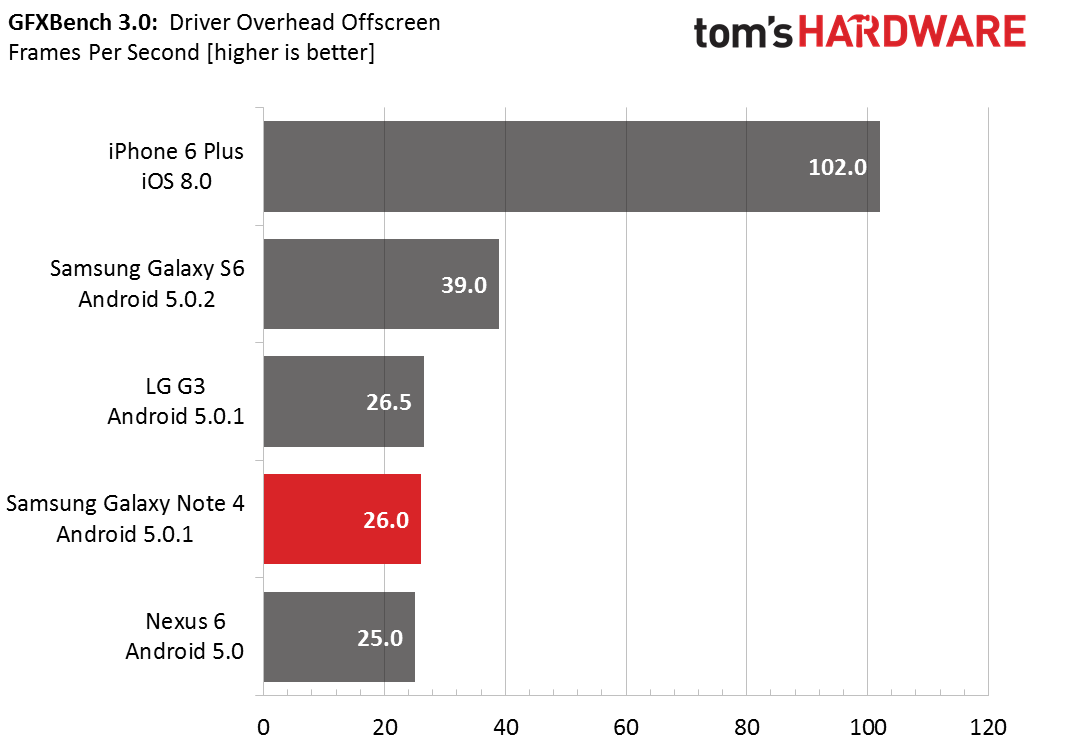

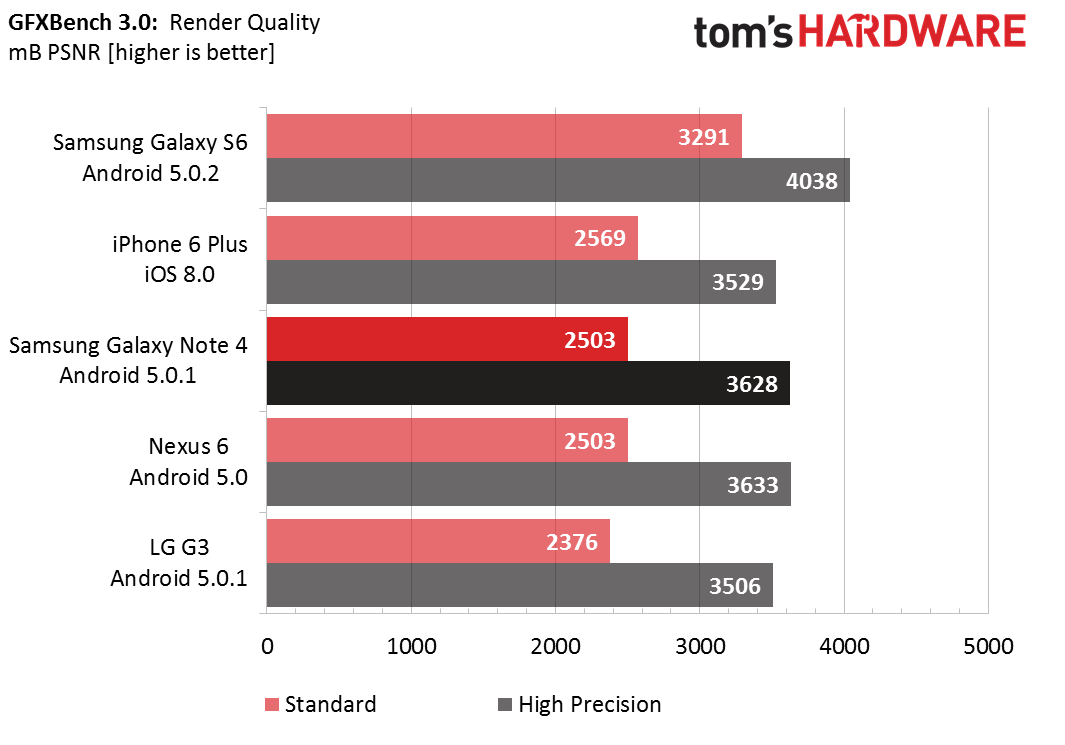
The synthetic tests don't show any particular weak points for the Note 4, its extra memory bandwidth put to good use in the Alpha Blending and Fill tests.
It's curious to see the Galaxy S6 outperform the Note 4 in both Manhattan and T-Rex, but fall so far behind in the synthetic tests. Monitoring clock frequencies shows that the S6 hits its max GPU frequency of 772MHz in Manhattan as expected; however, it only ramps to 700MHz in the synthetic tests and 3DMark. A 10% deficit in clock speed can account for some of the deficit, but not all. Seeing the low scores in Alpha Blending and Fill, I thought the memory bus may not be reaching its max frequency. According to the GPU frequency table, however, the memory bus runs at max frequency as long as the GPU is clocked at 600MHz or above. There's no obvious explanation for this discrepancy.
The Adreno 420 in the Note 4 is not the top dog in the GPU race anymore, but still offers excellent performance running modern games. Rendering enough pixels to fill the QHD display with a complex 3D scene is still too much for the Adreno 420. Fortunately, most games render at reduced resolutions offscreen so this should not be an issue in most cases.
Where this limitation does come into play is when using the Samsung Gear VR. With your eyes so close to the screen, even a QHD resolution on an AMOLED panel is not enough to mask individual pixels. The need for higher resolution panels for VR/AR applications will continue to push GPU development. Until GPUs catch up, the complexity of VR content will be limited.
Current page: GPU And Gaming Performance
Prev Page CPU And System Performance Next Page Battery Life And Thermal Throttling-
ZolaIII All in all nice review but I somehow feel you skipped a litle audio section. Not that I blame you much for it as Qualcomms solution is nothing special & it's far behind WolfsonMicro's WM5110 used on Exunos equipped models. Looks like you still didn't got to the bottom of bus frequency scaling dependencies on this Qualcomms SoC gen. ??Reply -
Vorador2 Replythis came out long ago!
It's a tradition. Everybody reviews phones in the week before or after a phone is released.
Tomshardware is better than that. Fashionably late to the party. -
jafrugh Replythis came out long ago!
It's a tradition. Everybody reviews phones in the week before or after a phone is released.
Tomshardware is better than that. Fashionably late to the party.
Well if you think Toms's Hardware needs to be quicker on the draw for phone reviews, go to this article: http://www.tomshardware.com/news/mobile-editors-wanted,29105.html -
Vlad Rose Replythis came out long ago!
I thought the same thing considering I'm using a Note 4 Edge right now... lol -
alex davies Replythis came out long ago!
The difference between our review and others is that we tested the Note 4 running the Lollipop update, which only came out recently.
We also compare its performance to newer devices such the Galaxy S 6, so you can see how the Note 4's older SoC compares to the latest and greatest. -
MobileEditor ReplyAll in all nice review but I somehow feel you skipped a litle audio section. Not that I blame you much for it as Qualcomms solution is nothing special & it's far behind WolfsonMicro's WM5110 used on Exunos equipped models. Looks like you still didn't got to the bottom of bus frequency scaling dependencies on this Qualcomms SoC gen. ??
I agree with you regarding our audio testing. I'm definitely not happy with it. We need to acquire some testing equipment, but the hardware we found cost $30k!!! Needless to say, we're still using my ears, because they're cheap.
If you, or any of our readers, could point me towards some audio testing equipment that mere mortals can afford, please PM me.
I did not investigate the bus scaling on the Note 4, partly because this review was finished by then and partly because the Note 4 did not exhibit "unusual" behavior. We will be examining this for the GS6.
- Matt H. -
10tacle Nice review and very useful to people like me needing an upgrade after skipping two generations of smart phones. I usually keep mine 3 years, and my Droid Bionic is like running a Core 2 Duo desktop these days. I'm still debating between the Note or Galaxy. Apples are out because 1) I don't like the fact that the battery *cannot* be removed to completely shut the phone off, and 2) no MicroSD slot for memory expansion.Reply
There will come a time when all smart phones from all manufacturers no longer allow SD memory upgrades, and I think that time is coming sooner rather than later. After all, one can go buy a 128GB $100 MicroSD card, but if Apple users want a 128GB phone, they have to shell out another $200 clams from the base 16GB model, and they don't get the extra "free" GB memory to start with after upgrading that came with the Android.
But with that said, there are some people reporting about overheating and battery drain with their Note 4. Battery drain can be a problem with the provider though like a cell tower being down. Plus, the Note 5 is coming in a few months, possibly in July. I'm hoping it still has an SD slot otherwise I'll get the 4 and hope the serious overheating and battery drain reports are a fluke.
